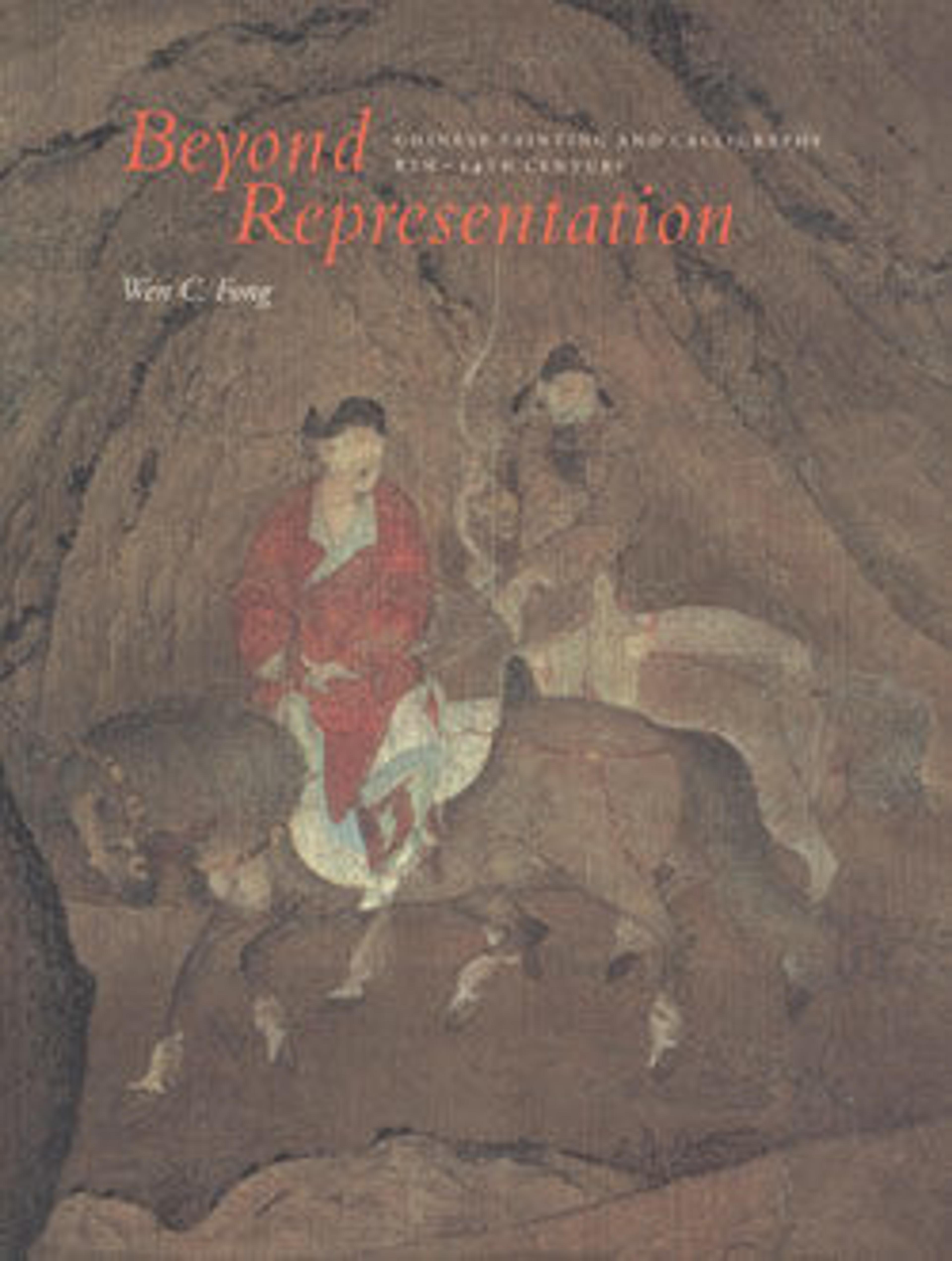Quatrain on yellow roses
During the reign of Ningzong (1202–24), his consort, the empress Yang Meizi, was a formidable presence, both in politics and in the arts. Starting out as a young musician in the palace of Empress Wu (wife of Gaozong), Yang Meizi found favor with Ningzong and in 1202 maneuvered her way into becoming his wife. Wielding great power in court politics, she had the powerful prime minister Han Tuozhou executed in 1207 without consulting her husband. In 1224, when Ningzong died, she dethroned Crown Prince Hong and supported Prince Yun, who became Emperor Lizong (r. 1224–64).
An excellent calligrapher who practiced the imperial style initiated by Gaozong (r. 1127–62), the empress may have inscribed this poem on the opposite side of a fan painting of roses by a court artist:
Snowy stamens dot the tender yellow [flowers];
The rose is drenched with the morning dew that
wets my garment.
As the west wind sweeps away the wild bees and
butterflies,
I alone, at the border of Heaven, keep company
with the fragrant cassia tree.
(Wen C. Fong, trans., in Beyond Representation:
Chinese Painting and Calligraphy, 8th-14th Century
[New York: The Metropolitan Museum of Art,
1992], p. 237)
An excellent calligrapher who practiced the imperial style initiated by Gaozong (r. 1127–62), the empress may have inscribed this poem on the opposite side of a fan painting of roses by a court artist:
Snowy stamens dot the tender yellow [flowers];
The rose is drenched with the morning dew that
wets my garment.
As the west wind sweeps away the wild bees and
butterflies,
I alone, at the border of Heaven, keep company
with the fragrant cassia tree.
(Wen C. Fong, trans., in Beyond Representation:
Chinese Painting and Calligraphy, 8th-14th Century
[New York: The Metropolitan Museum of Art,
1992], p. 237)
Artwork Details
- 南宋 楊皇后 楷書瀹雪凝酥七絕 團扇
- Title: Quatrain on yellow roses
- Artist: Empress Yang Meizi (Chinese, 1162–1232) , r. 1202–24;
- Period: Southern Song dynasty (1127–1279)
- Date: early 13th century
- Culture: China
- Medium: Round fan mounted as an album leaf; ink on silk
- Dimensions: 9 1/4 x 9 5/8 in. (23.5 x 24.5 cm); with mat: 14 1/2 x 15 1/2 in. (36.8 x 39.4 cm)
- Classification: Calligraphy
- Credit Line: Bequest of John M. Crawford Jr., 1988
- Object Number: 1989.363.13
- Curatorial Department: Asian Art
More Artwork
Research Resources
The Met provides unparalleled resources for research and welcomes an international community of students and scholars. The Met's Open Access API is where creators and researchers can connect to the The Met collection. Open Access data and public domain images are available for unrestricted commercial and noncommercial use without permission or fee.
To request images under copyright and other restrictions, please use this Image Request form.
Feedback
We continue to research and examine historical and cultural context for objects in The Met collection. If you have comments or questions about this object record, please complete and submit this form. The Museum looks forward to receiving your comments.
